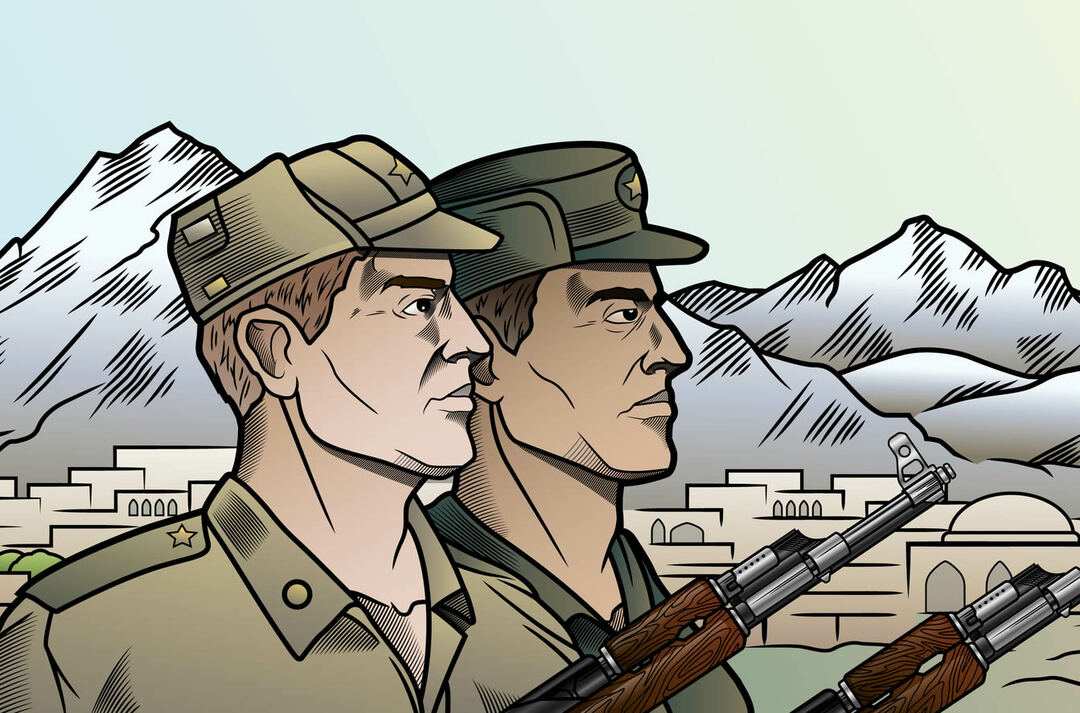Soviet intervention in Afghanistan
Miscellanea / / July 04, 2021
By Guillem Alsina González, in Nov. 2018
 Afghanistan is also known as "Soviet Vietnam" for two reasons: the first is because it represented a defeat comparable in form and result to the one they suffered. the United States in the Asian country, and the second because it was precisely the United States who made sure that this was the case by supporting those who fought against it. government Communist established in Kabul.
Afghanistan is also known as "Soviet Vietnam" for two reasons: the first is because it represented a defeat comparable in form and result to the one they suffered. the United States in the Asian country, and the second because it was precisely the United States who made sure that this was the case by supporting those who fought against it. government Communist established in Kabul.
In fact, the history of Afghanistan since the British tried to dominate the region in the 19th century in the framework of the so-called Great Game (a kind of precedent of the Cold War after the Second World War, but with the British and Russian empires as protagonists), has been that of civil conflicts and foreign interventions, with their most dire effects.
In 1978, a revolution had placed a pro-Soviet communist government leading Afghanistan. The United States quickly launched an intelligence operation to destabilize it.
And they found that Afghans with more conservative Islamist ideas had the ideal profile to confront the communists, providing them with weapons, training and logistics.
It was logical that the Soviet government decided to intervene militarily in a country with which it shared a border, since considered that it was in its area of influence and, furthermore, it could not afford to have a pro-Western government so close from his territory.
The Soviet intervention in December 79 was carried out in a climate of military coups and counter-coups, to stabilize the country by placing a candidate of their liking in power.
At first, it is a disguised operation to overthrow President Jafizulá Amin and place in his place the more moderate (and close to Moscow) Babrak Karmal, but quickly led to an open support operation, which would have 100,000 soldiers, 1,800 tanks, and 2,000 more armored vehicles, in addition to support aerial.
Initially, and after the Afghan government of Amin had requested Soviet technical support for the maintenance of its military equipment, Moscow sent a force of about 600 technicians... that they actually belonged to a special KGB corps.
These soldiers quickly took control of key points in Kabul, such as the airport, as well as the Soviet army crossed the border under the treaties of friendship and mutual support that his country had with Afghanistan.
The Soviets are rapidly spreading across the country in support of an Afghan government army that finds itself unable to contain the mujahideen, the guerrillas who fight against the communists, with religion as one of their axes of performance.
Among these various mujahideen groups, there is one that will shape, in the future: the fate of Afghanistan: the Taliban.
The United States quickly engages with aid to the Mujahideen, in the form of weapons, first of more timid way, although they will end up sending them state-of-the-art weapons to cover their needs.
In fact, they even started with shipments of British Lee Enfield rifles... from the First World War (still in service during the Second).
The Afghans, excellent warriors, knew how to use these ancient weapons in a masterful way, thus that the question was obvious: what would they be able to do with modern assault rifles and weapons antitank?
It's not just the Americans who get involved; Pakistan does it thoroughly, also covertly, and Saudi Arabia. China would do it, but curiously on the same side as the Americans, fearful that Soviet influence would spread too far in the area.
During the early 1980s the war will be characterized by the Soviet attempt to carry out large-scale actions, at which the mujahideen refused, retreating, and opting for small ambushes, following the logic of the war of guerrillas.
Their targets were always supply columns, patrols, and small crews from the Soviet armed forces and the Afghan government army.
In April 1982, and by mistake - or so it was officially said - Soviet troops entered Iran. An Iranian plane destroys two Soviet helicopters. Tension builds at that moment, but the incident quickly de-escalates.
The dynamics of the war are already then as that of Vietnam had been for the United States: the Soviets dominate the urban areas and the large communication axes, but when leaving these enclaves, they cannot stop doing it in massive convoys, and watching every moment to avoid falling into ambush.
During the first half of the 1980s, the Communists effectively dominated 20% of the territory, while the remaining 80% escaped their direct control. If the government or the Soviets wanted to maintain effective control of an area, they had to fill it with troops, which was costly for little profit.
The Panshir valley will be one of the most attacked by the communists, against a fierce defense brought by the legendary Ahmad Shah Masud, who would defend him again from the Taliban between 1996 and 2001.
And the Soviets made the same mistake that the United States had made in Vietnam: they were spiraling out of ever larger troops, and getting more involved.
This, in turn, led to greater involvement of the population with the Mujahideen, who were swelling their ranks. And these also came from the outside, attracted by the jihad (holy war) that had been decreed against the Soviet infidels. One of these foreign recruits, from Saudi Arabia, will be a young Osama bin Laden.
Little by little the guerrillas were cornering the communist troops and, if they did not subdue them with greater defeats, it was because the resistance was very fragmented and there were also internal fights between movements and clans.
For their part, the Soviet troops stopped the guerrilla advance through one of the few factors differentials in your favor in an asymmetric war: air superiority.
The Afghan rebels had no means to shoot down Soviet planes and helicopters, so they found air domination a good tool to force Afghan submission.
This changed in late 1986 when the United States introduced missiles into the fight. Stinger.
These missiles land-air lightweight were extremely easy to use (for clumsy, we might say) and terribly effective. In fact, it has been said that its introduction in the conflict it tipped the balance in favor of the Mujahideen, allowing them to face Soviet air power.
Those who suffered the greatest casualties due to these weapons were combat helicopters and, in particular, the Mil-Mi 24 model.
In the last quarter of the decade, the Soviets sought to leave that war, which for them entailed a high economic, diplomatic, and social cost. In 1989, and with the fall of the Berlin Wall, the Soviets left the country permanently.
The communist regime in Kabul still survived until 1992, when it only controlled Kabul and a narrow strip of territory that linked it, in the form of an umbilical cord, to the Union Soviet.
I still remember televised images of the murder of Najibulá in 1992, when the Taliban succeeded in occupying Kabul. They exposed his body in a degrading way.
Fotolia photo: Satori
Issues in Soviet Intervention in Afghanistan
